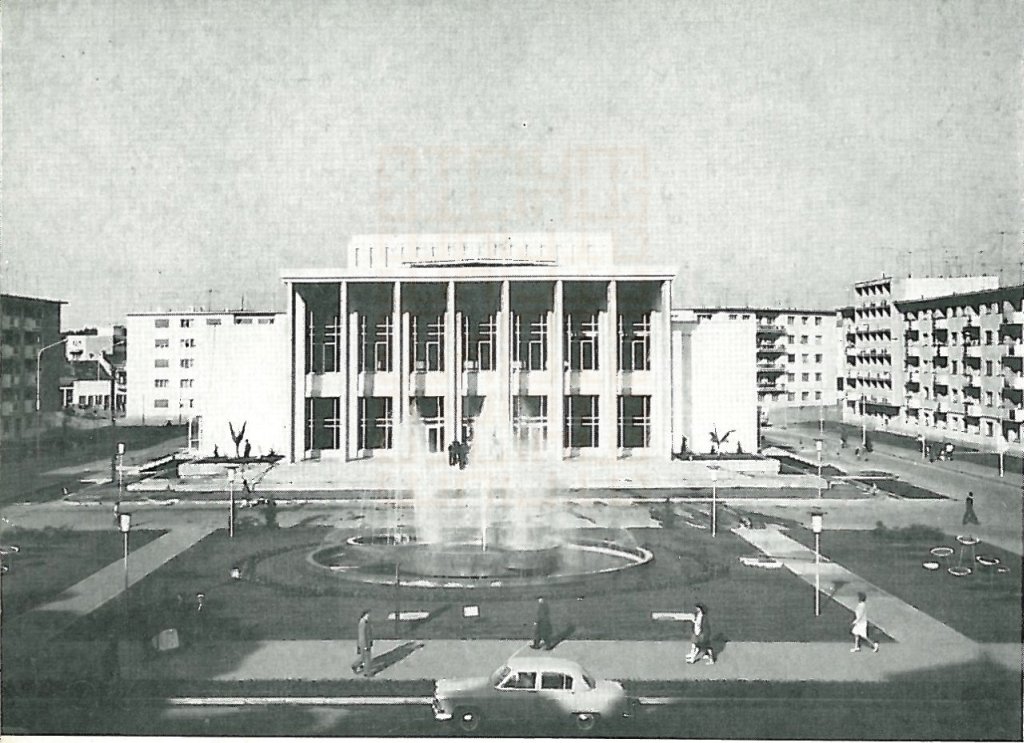Trade Unions House of Culture “Vasile Alecsandri” Bacau |
 View on map |
 Images |
 Video |
 Other files | [ Back ] | |
Moldavia, Romania
 | It is the main piece of urban square (which has the dimensions 80x90m) created especially to be furnished with this endowment (main piece of the created urban space). Rectangular plan in front the objective has the main axis marked by a portico having the height equivalent to 4 levels, beyond which there is the main hall entrance, to which is next the performance hall, flanked on the side facades by volumes having 3 levels which hosts specific functions of the program (cultural circles, administration). Offices are placed along corridors adjacent to the performance hall. Stairs serving vertical access to offices located in the corners of the main façade (stairs of honor) and on the opposite façade, there are stairs with functional character placed adjacent of the pocket in the background of the scene. This modern classicized architecture can be placed in a descendant of Italian architecture from the Mussolini’s time. The House of Culture in Baia Mare is a project that illustrates very well the period from 1960 to 1971, when the Romanian Communist Party sought an opening towards normality, which also meant an opening towards the democratic (western) world or the mimicking of such an opening. On the other hand, from the architectural and urban viewpoint, it was also a time when, the Party line as stated by Nicolae Ceausescu, leader of the Party – State system, asked for a “Romanian architecture [that] should be capable of combining the national specific with the modern spirit in the most felicitous way” The House of Culture was built in an urban square sited in a space obtained by demolishing part of the old (mainly nineteenth-century) city centre. The buildings that border the square were constructed mostly at the same time as the House of Culture, which stands in isolation in the middle of this built perimeter. |











